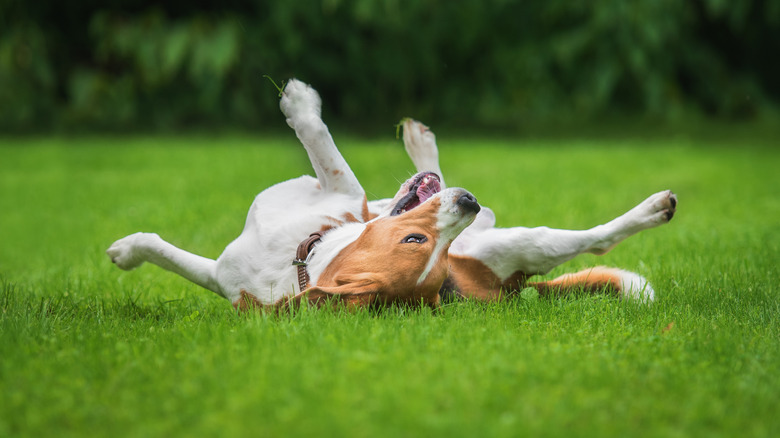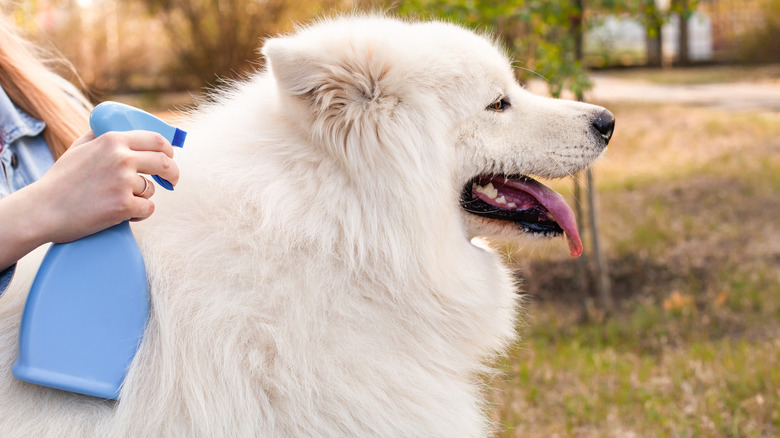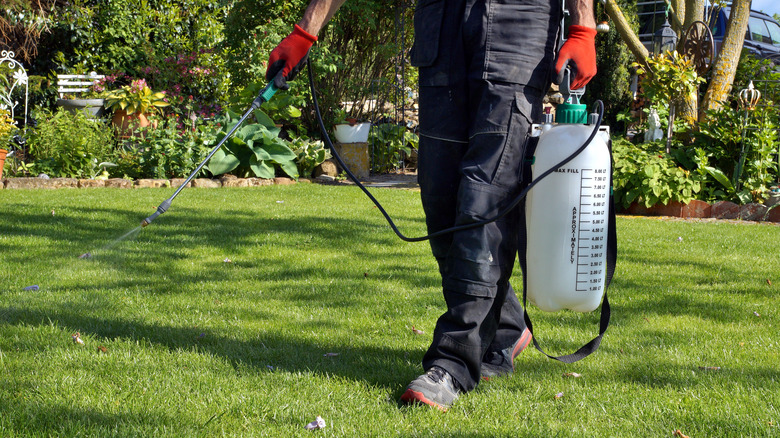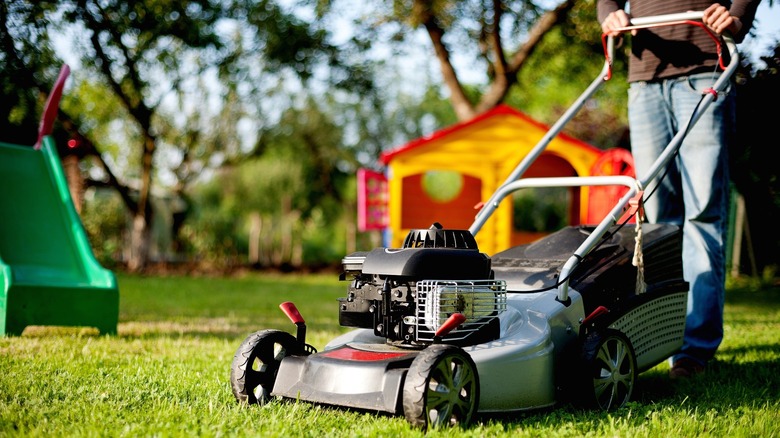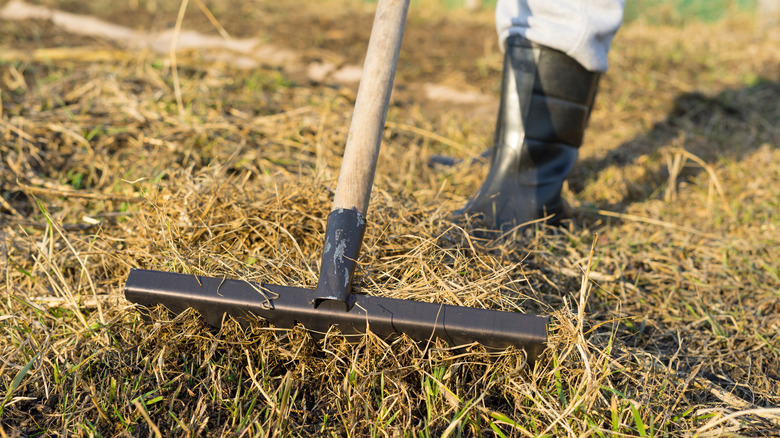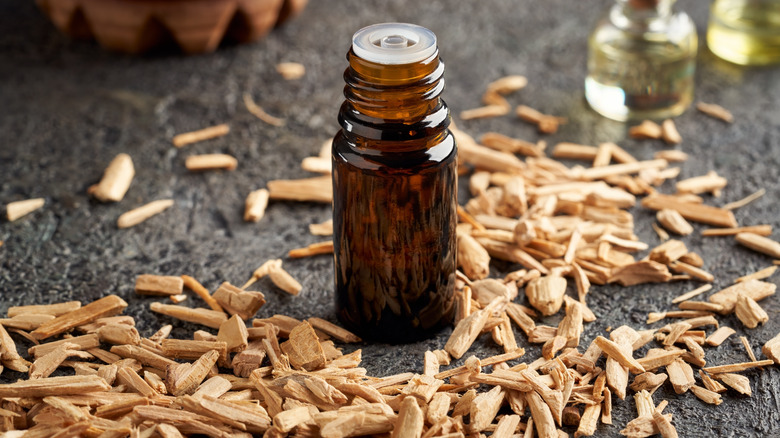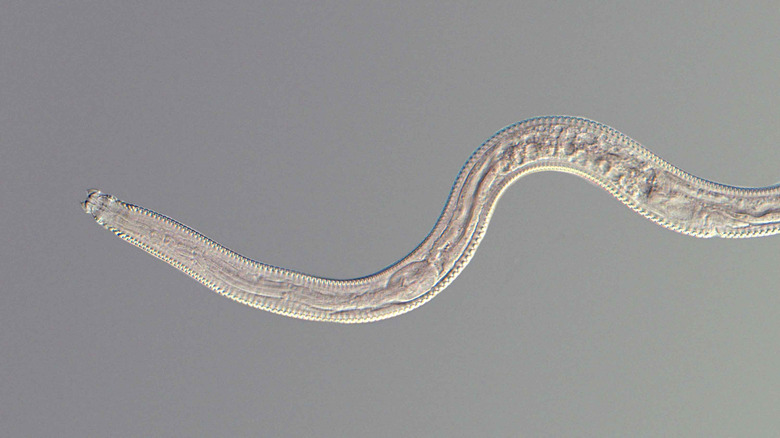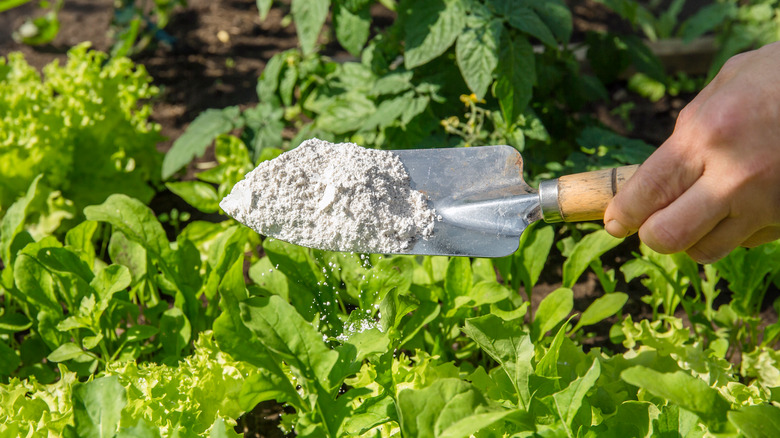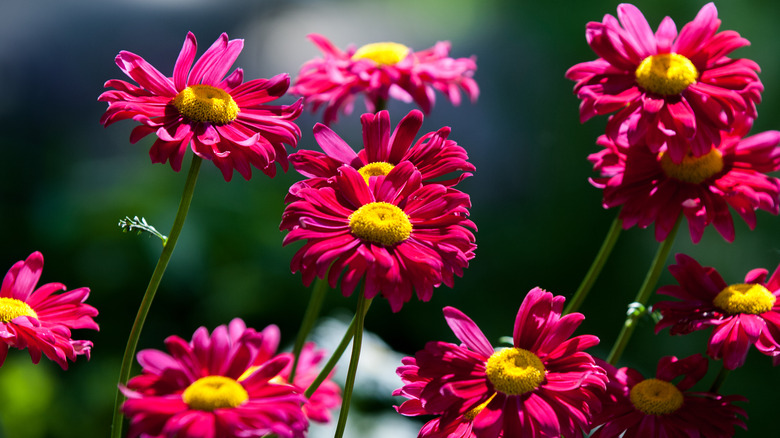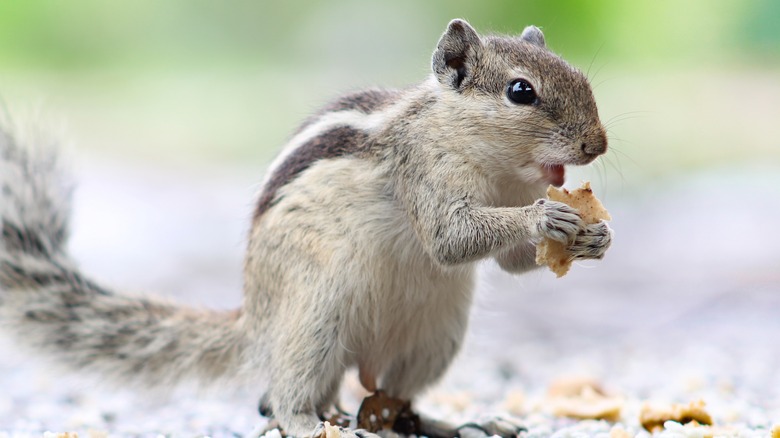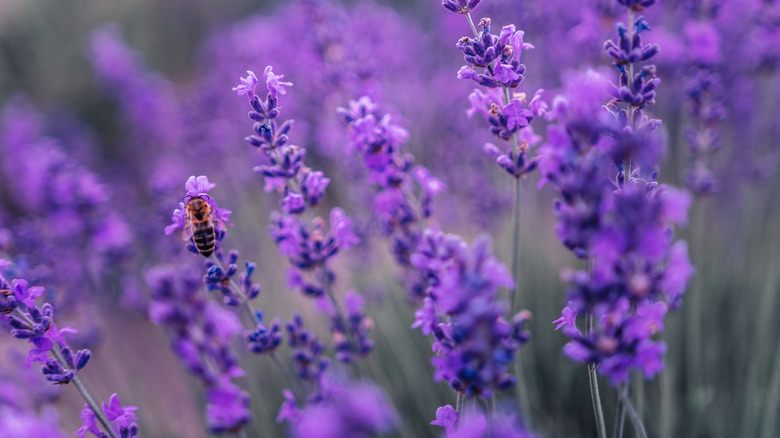These Natural Tricks Make Getting Fleas Out Of Your Yard Even Easier
They invade at a rapid pace. Pets can easily track them into your home. Yet, they're so tiny that you can barely detect them. Fleas in your yard are more than a nuisance; they're a hazard for the entire family, especially for your pets. It's no wonder you would want your yard to be completely free of fleas. With that in mind, how can you get rid of them without using chemicals that can be harmful to both humans and pets? Fortunately, there are some chemical-free methods that are quite simple and effective (per Crafty Little Gnome).
We know how important this is, so we've rounded up a slew of safe and natural solutions for eliminating fleas without relying on harsh pesticides. In fact, you might be surprised by the substances that keep fleas at bay, some of which you may already have out in the garden or on the shelves of your kitchen cabinets. Some solutions contain pet- and yard-friendly products used for everyday cleaning while other methods involve plants or their essential oils.
Give your pet a white vinegar spritz
You can start with changing up your pet's bathing routine by using natural cleaners like white vinegar. One way to do this is to pour the vinegar directly onto your pet until the coat is soaked, which causes a hostile environment in the fleas' hideaway. You can also spot spray wherever you see fleas hiding. Consequently, ridding your pet's coat of fleas mitigates an infestation by stopping them before they enter the house.
Make your own spray
Likewise, a combination of baking soda and water creates a flea spray that is safe for humans and pets (including cats), as well as your lawn. Plus, if you don't want to tote the sprayer around, you can simply apply the baking soda by itself which will still annihilate fleas just as fast and effectively, according to the Bug Squad.
Maintain a well-manicured yard
Another important tip for warding off fleas is to mow your yard regularly and to rake up debris immediately afterward. Moreover, by getting rid of the grass cuttings you're ensuring that the area won't hold in too much moisture, another thing that attracts fleas (per My Move). Overall, your yard will not only look great, but it will be far less conducive to fleas.
Balance out sunlight and moisture
Speaking of moisture, watering too often or too much at one time will create a habitat that's attractive to fleas. So while you want to keep your lawn looking green, you don't have to keep the ground wet by watering daily. Letting the sun shine on the lawn lessens the chance of the eggs' survival, which means you need to prevent grass cuttings, leaves, and twigs from accumulating into piles, explains Scotts.
Use cedar mulch and oil
You can also repel fleas by laying down mulch that's made from cedar, another natural repellent. Cedar wood has an oil in the bark that gives this type of wood its aroma. What seems pleasant to us is not enjoyed by fleas and will work to keep them at bay, notes Reader's Digest. Spread cedar chips, mulch, sawdust, or oil in any area that might attract fleas.
Integrate nematodes into your outdoor environment
If you're looking for a more proactive approach to getting rid of fleas, try integrating nematodes into your outdoor spaces. According to Biologic, scanmask and ecomask are two species of these tiny organisms that feast on larvae and pupae, the two stages of life when fleas are still living in the soil. By using nematodes, you'll be tackling the problem in its earliest stages.
Sprinkle diatomaceous earth
Diatomaceous earth is yet another alternative to a chemical pesticide. This fine powder consists of pulverized diatoms in the form of algae with a shell-like covering. Of course, the algae have long been deceased so there's no worry of other issues affecting your grass or your pets, but their shells easily suffocate fleas. This powder effectively stops infestations in their tracks when you sprinkle it in shaded areas and other parts of your yard that are vulnerable to fleas, per the Old Farmer's Almanac.
Apply pyrethrin dust
Whether you grow your own or purchase this natural pesticide, pyrethrin dust quickly eliminates infestations and prevents them from reoccurring. Pyrethrin dust comes from flowers known as painted daisies, which you can find at your local nursery. Planting these flowers in high-risk areas might prevent an infestation, but the fastest way to use them is to dry the petals and grind them into dust to spread over the entire outdoor space. One word of caution is to keep the dust away from cats.
Keep critters away
In addition to applying natural pesticides to your yard, you can also make it less friendly for the critters that carry fleas. As mentioned, regular lawn maintenance disrupts the fleas' environment. The same goes for squirrels. If you have pecan or fruit trees, you'll need to harvest right away and make sure all trash can lids are tightly secured to keep the squirrel-attracting odors from escaping, urges Tomcat.
Use lavender and clove
Lavender and clove can be used in the yard as well as directly on your pet. For instance, you can mix the essential oils with your pet's shampoo, mentions The Free Range Life. Both natural substances prove to be fatal against fleas. Alternatively, dilute the oils with water in a spray bottle and give your dogs a quick spritz to prevent them from carrying fleas indoors, but do not use it on cats. In relation to the yard, planting lavender creates an unwelcoming habitat for fleas while beautifying your landscape.
